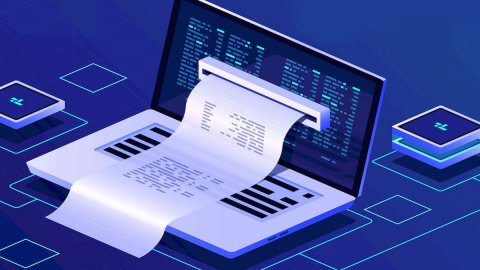Also for i flat rate the obligation is approaching electronic invoice. With the go-ahead from the Permanent Representatives Committee - so-called Coreper II - even taxpayers under a flat tax regime who sell goods and services will be obliged to issue an electronic invoice, to better control the flow of money in order to reducetax evasion. While the Senate has approved the extension of the ban on electronic billing for doctors, for which the expense documents relating to health services still remain analog.
In our country, the problem of tax evasion is a hot topic that has intensified over the years. To lose the taxpayers who have to take on higher taxes than they should if everyone paid taxes. The electronic invoice allows many advantages: saving of time, costs and space by overcoming the paper, printing and filing up to a more general simplification at an accounting level. All this translates into a lower environmental impact. But the electronic invoice also allows one greater traceability of transactions trade and for this reason it becomes a fundamental tool in the fight against tax evasion.
From 1 January 2019, the electronic invoice has become mandatory for all type transactions B2B (business to business) e B2C (business to customer), with the exception of operations carried out by those who adopt the minimum or flat-rate regime. Meanwhile, the prohibition of electronic billing for doctors also in 2022. The new stop for health services comes from the text of the tax decree approved by the Senate. Confirmation from the Chamber is awaited for the final go-ahead.
But things could soon change. It all started last March, when the Italian government asked the European Commission for the ok to continue until 2024 the obligation of electronic invoicing and to extend the plateau also to flat rates, currently excluded. Just over a month ago, the European Council, on a proposal from the Commission, accepted both requests from Italy.
Coreper II also gave its positive opinion on Wednesday 8 December. Now we await the definitive authorization by the EU Council and the publication in the Official Journal of the Community. At that point the ball will go to the Italian government which will have to create an ad hoc regulation. Even if a tax delegation is more likely.
If even these last steps give a positive outcome to the proposal, the obligation of the electronic invoice for VAT numbers in flat tax it should start by mid-2022 and will affect around 1,5 million taxpayers. In this way, the tax authorities will be able to have even more detailed information on these taxpayers and verify compliance with the requirements to be able to take advantage of the flat-rate regime.
But in economic terms, what changes for flat rates? As foreseen by the Pnrr, the government will have a report on VAT evasion and on the measures to combat the phenomenon of those who do not invoice the supply of goods and services. The dossier also aims to find incentives for end consumers so that requesting an invoice, receipt or receipt is an advantage and not a disadvantage.





